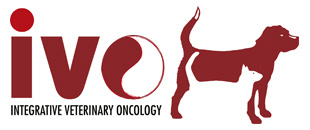Cryotherapy is the use of cold temperatures to kill cells. Many types of cryogen exist to induce cold temperatures in tissues. The most commonly used are nitrous oxide and liquid nitrogen. At IVO, we use liquid nitrogen as the cryogen. The liquid nitrogen is transferred from a Dewar (storage container) to a portable applicator system.
Liquid nitrogen may be applied with various probes or as a fine mist or spray. Application of the liquid nitrogen will produce an “ice ball” at the site which will result in tumor cell death. Typically 2-3 “freeze-thaw” cycles are performed of the lesion at the same sitting.
Treatment of small externally accessible tumors may be treated under a local anesthetic only. Larger tumors, multiple tumors, or tumors of sites such as eyelids or oral (mouth) cavity may require sedation or general anesthesia for treatment. A minimal clip of surrounding hair and application of antiseptic is performed prior to cryosurgery. If the tumor type is not known, the top of the tumor or a wedge of tissue is removed for biopsy and the remaining tumor frozen. Tumors best treated with cryosurgery are those that are relatively small (< 2cm) and superficial and occur in readily accessible sites such as perineum, eyelid, oral cavity and skin.
Mild discomfort may be experienced immediately after freezing. The amount of discomfort is often related to the size of the lesion treated and/or number of lesions treated at one sitting. Most patients will receive nonsteroidal anti-inflammatory pain medications for several days to minimize discomfort. The frozen tissue will swell and blister. The tissue may also turn a darker color due to necrosis and collapse of blood vessels. A small amount of serum or blood may ooze from the treated area. The treated sites will form a dry scab within a few days which will fall of within 10-21 days leaving a pink bed of new epithelium. Hair regrowth may be white or gray at the periphery of the lesion due to death of melanocytes (pigmented skin cells)
A routine recheck is scheduled at 6-8 weeks to assess healing and control of treated lesions. Subsequent rechecks are dictated by the tumor type and expected behavior.
Back to Western Medicine
|
|
